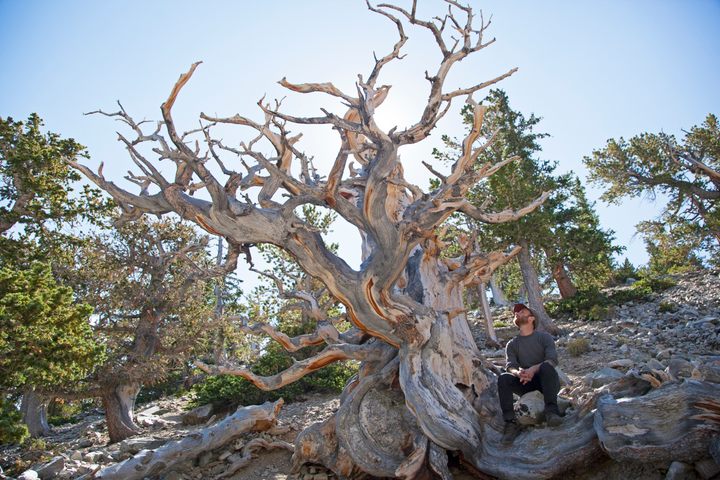
Meet Nevada’s Bristlecone Pines, Some of the Oldest Trees on Earth
These ancient trees with a survivalist spirit inspire awe.
High in the Nevada mountains, growing where little else could survive atop rocky, windswept peaks, Bristlecone pine trees are silent professors of resilience.
Twisted and chiseled over time by the elements, the trees have survived the harshest of living conditions, outliving historic empires and ice ages and catastrophic climate events. Their almost mythical ability to survive in these environments is their secret to longevity.
Nearly 5,000 years ago, Pinus longaeva took root in the subalpine regions of the Great Basin. They’ve been there ever since.

Magical survivors
Brian Smithers, an assistant research professor at Montana State University, has studied Bristlecone pines for over a decade. But his admiration for the tree came long before.
“In college, I heard about these magical trees in the White Mountains and I was amazed—just floored,” he said. “I was always called back to those trees and those forests.”
He went on to research resilient species—Bristlecones, included—that, as he says, “live on the edge of what’s possible.”
Bristlecone pines grow in secluded groves in just a few states, including Nevada. Extreme cold, dry soil, high winds, and high elevation—about 10,000 feet—make their habitat severe.
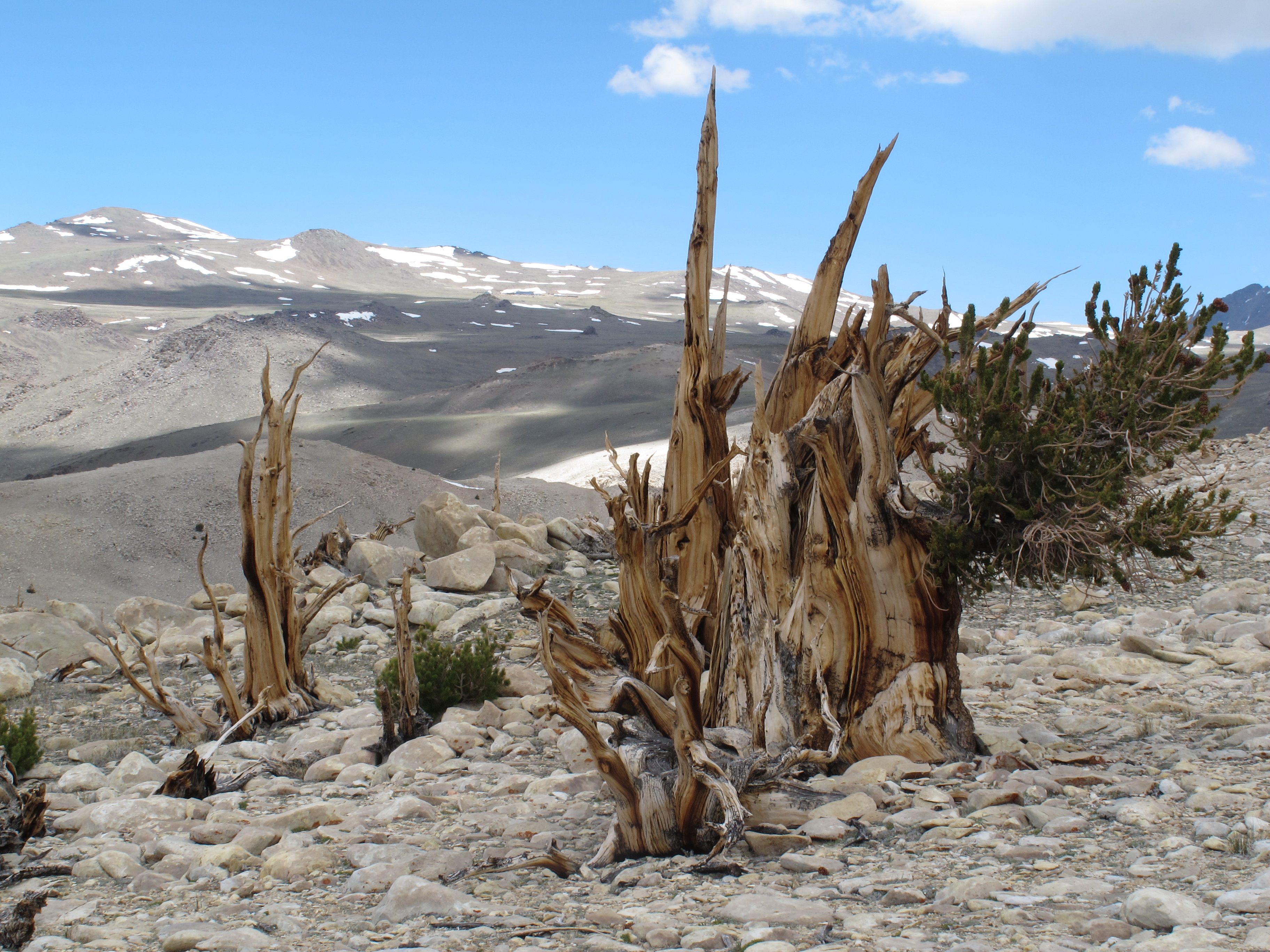
The pines’ wood is dense and resinous, good for resisting insects, fungi, and other pests. In some of the oldest specimens, sometimes just a narrow strip of living tissue links the tree’s roots to a smattering of live branches.
They also grow in rocky dolomite soil, a type of low-nutrient limestone where little else could subsist.
Given the conditions they live in, environmental competition for the almost dead-looking pine is low. And they grow fairly far apart from each other, so even in the rare case of fire, the blaze almost never destroys an entire grove.
“These trees defy nature and live in extremes,” said Smithers. “They’re found in these far-flung places where you can stand in a grove of them and feel like no one has ever been there before.”
While highly championed redwoods and giant sequoias can grow 50 feet in their first 20 years, these pines, known to scientists as extremophiles, grow extremely slowly. Bristlecones are in no hurry.
Natural works of art
Despite a core of the hardy victor, Bristlecones’ outward appearances are that of hard-knock survivorship, of barely hanging on.
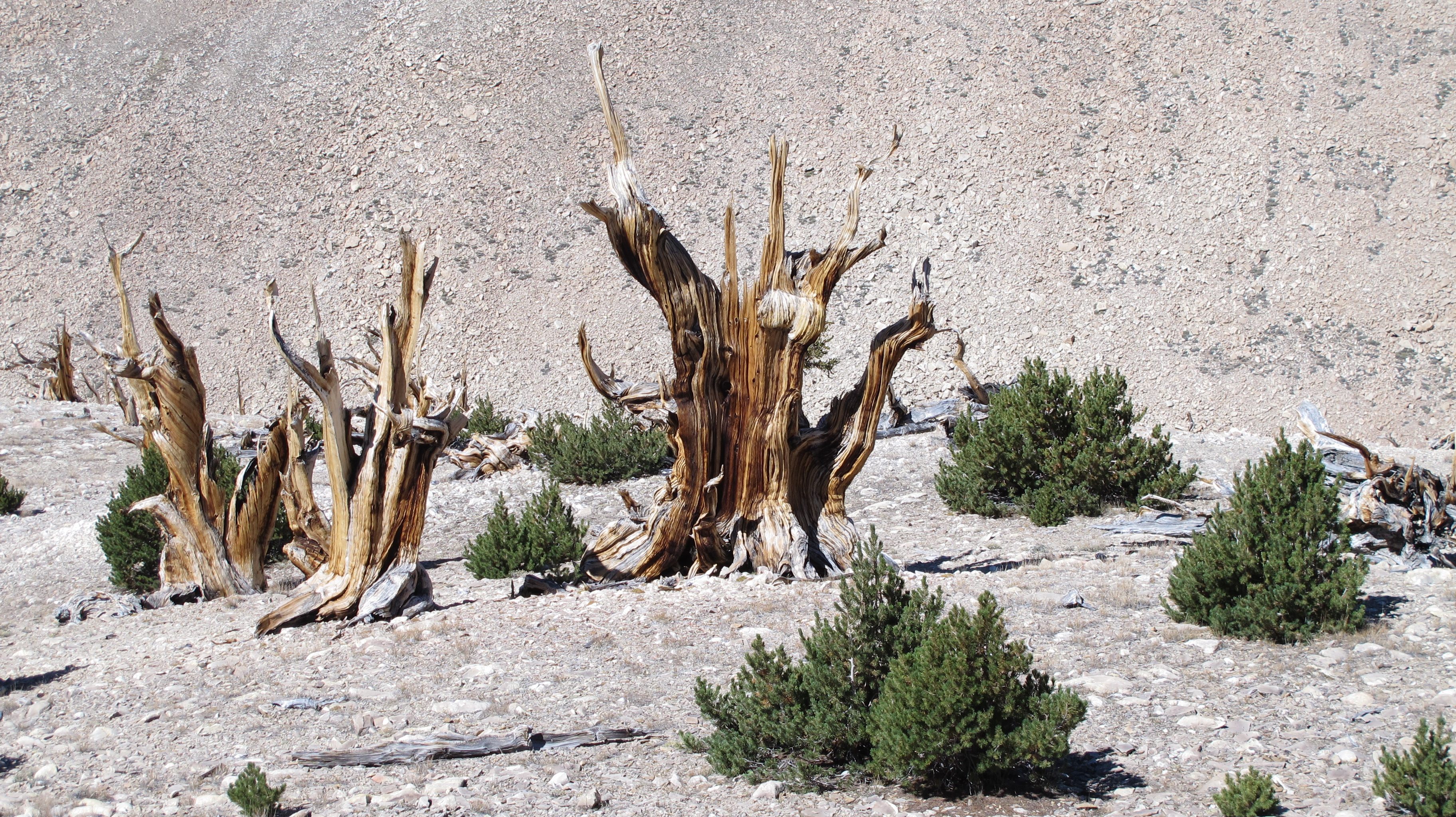
“You can see the weather on them,” said Smithers. “It’s like that really old farmer, who has hands that are as rough as sandpaper, and you know that man is dirt-tough—you can see it.”
The trees’ response to the direction of the wind is also apparent. “They will allow tissue to die on the windward side, so they have a really scraggly look to them. It’s absolutely beautiful,” Smithers said.
Credit adaptation with the unique growth patterns of Bristlecone trunks. “They grow off to one side for a while, then the other side,” said Smithers. That gives them their twisty, unintentional makeup.“ Some twist because it gives them more strength.”
Bristlecone pine needles are about one inch long and grow in tight-knit packets of five. Cones develop in a deep purple color, which helps absorb heat, until they eventually turn brown. The cones’ claw-like bristles give the tree its name.
The bark is fairly unremarkable, according to Smithers. “It’s where the bark has come off the tree, where part has died, and you can see the wood behind the bark—that’s when you see really cool colors.”

“It’s like a work of art sculpted by the climate.”
A treasured few
Like wise old friends, some specimens of Bristlecones are so highly revered they’ve been named.
In 1957, near Nevada’s border with the Sierra Nevada range, experts used core samples to determine the age of a Bristlecone pine thought to be the oldest living organism on earth.
Methuselah, named after the longest-living subject in the Bible, is estimated to be 4,789 years old. To protect it from vandalism, the tree’s exact location is undisclosed by the U.S. Forest Service, but it resides in the Inyo National Forest.
“I go back to some places repeatedly, and I think, This tree was already old when Christianity started, when Jesus was born,” Smithers said. “Methuselah was germinated from a seed when Pharaohs ruled the Nile, and it’s been in the same place that whole time.”
One specimen thought to have been even older, Prometheus met an unfortunate fate. In 1964, a geographer was researching ice-age glaciology in the Great Basin National Park moraines, the remaining material from a moving glacier.
Since their rings contain thousands of years of valuable climate data, Bristlecones serve as time capsules. The U.S. Forest Service gave the researcher permission to take core samples from the pine to try to date the glacial features on which the ancient tree grew.
Accounts vary, but for one reason or another, the researcher got permission to have the tree cut down. Later, estimates showed that Prometheus had 4,862 growth rings, making it roughly 4,900 years old—the oldest known tree of its time.
Today, only Prometheus’s stump remains. “That’s a pretty remarkable place to go—” said Smithers, “visiting that spot, and being surrounded by these amazing trees. And then being faced with poor choices by humans.”
Visitors can interact with the rings at a display in the park’s Visitors’ Center, and Great Basin rangers give guided walks to Bristlecone groves. Wheeler Peak is the most accessible grove in the park, and the largest is on Mount Washington. For the most skilled explorers, others can be found at Eagle Peak Grove, but due to the steep terrain, access is difficult.
The trees can be found outside the national park, too. One of Smithers’ favorite spots is on the north slope of Mount Moriah, a peak of over 12,000 feet in the northern Snake Range of eastern White Pine County in Nevada.

“It’s a beautiful mountain with a nice trail that goes right to the top,” he said. Along the way, The Table is home to a large grove of Bristlecone pines. “[The wind] does a really nice job of sculpting some really neat looking trees.”
“We like big things, and we have an obsession with oldness, too. These trees aren’t big, but they are beautiful, and they grow in places where they defy expectations,” Smithers said. “They’re a lesson in persistence.”
This post is sponsored by Travel Nevada. Head here to get started on your adventure.


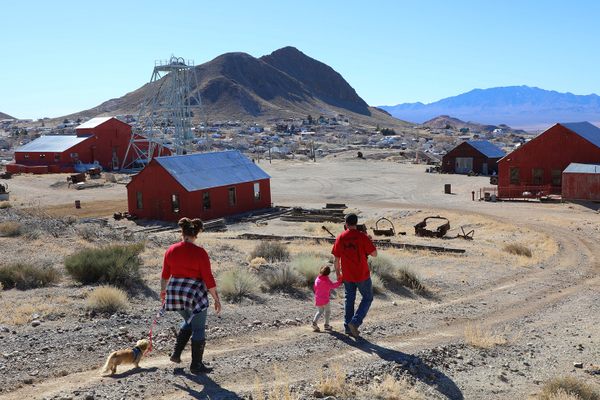




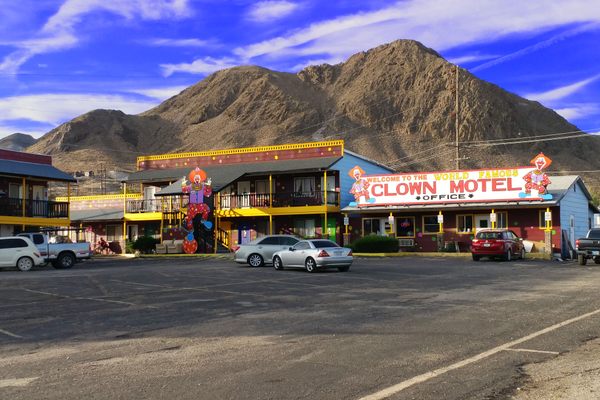
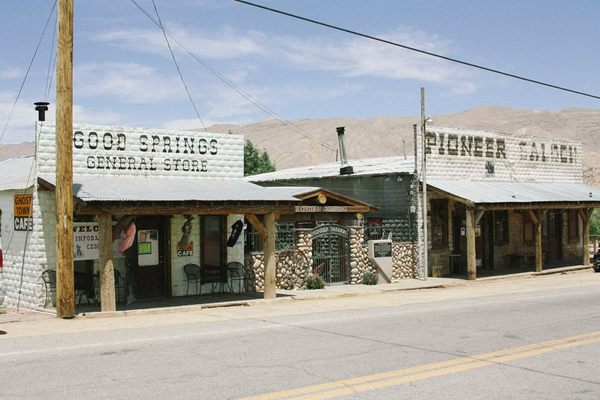

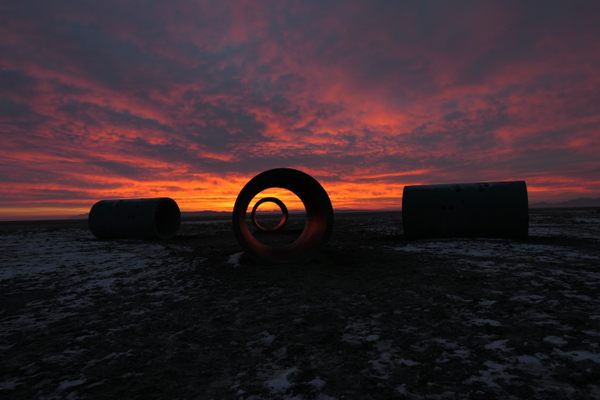










Follow us on Twitter to get the latest on the world's hidden wonders.
Like us on Facebook to get the latest on the world's hidden wonders.
Follow us on Twitter Like us on Facebook